Filopappou Hill
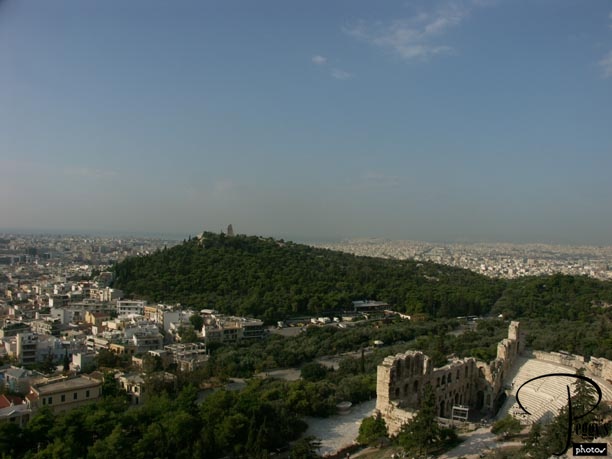
Filopappou Hill viewed from the top of the Acropolis (photo taken on an earlier day). Filopappou Hill is the highest point in southern Athens, 482 feet. It was known in ancient times as the Hill of Muses. At the top of the hill is the Monument of Filopappus (sometimes spelled Philopappus), which can be seen in the photo. I climbed up to the top of the hill.

Filopappou Hill
Prison of Socrates
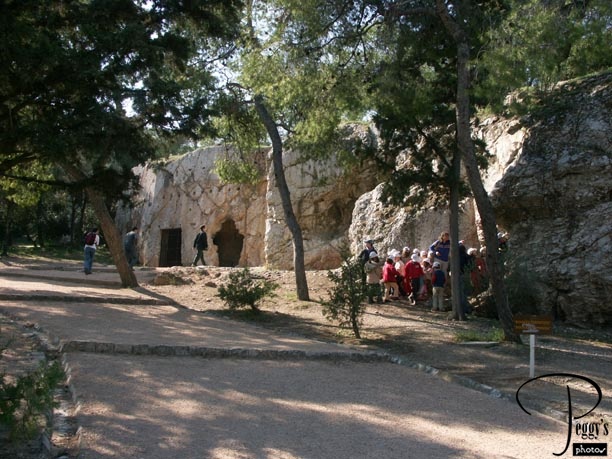
Not too far up the hill is the Prison of Socrates, where, according to legend (the Greeks say “according to tradition”), Socrates was imprisoned after being sentenced to death for corrupting the youth of Athens.

Prison of Socrates
Prison of Socrates
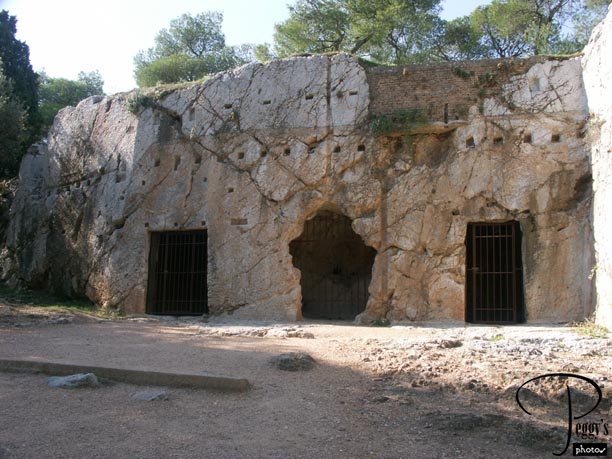
A closer–up view of the Prison of Socrates. It consists of three rooms that were cut out of the bedrock. The rooms were also used during World War II to hide the antiquities of the Acropolis and the National Archaeological Museum. The small holes in the bedrock are probably from where metal was taken out for other use.

Prison of Socrates
Diateichisma
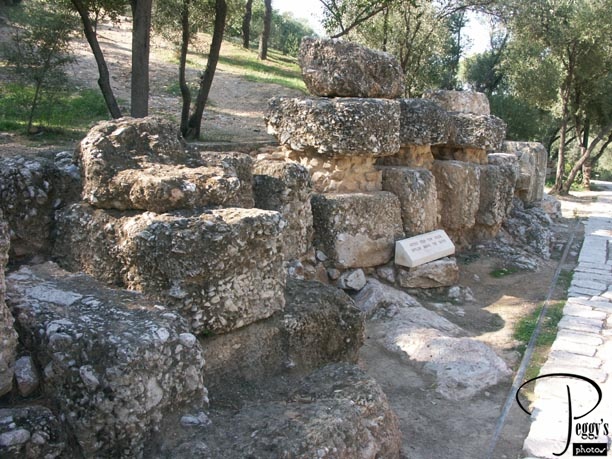
Part of the Diateichisma, a wall built by the Athenians in the 4th century B.C. to prevent the Macedonians from attacking them.

Diateichisma
Church of Dimitrios Loumbardiaris
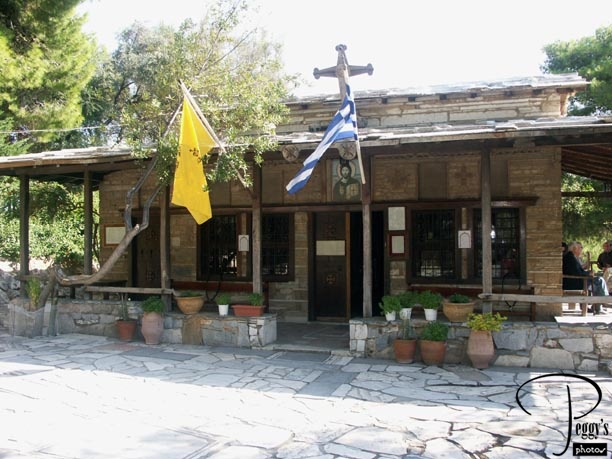
Not far from the Prison of Socrates is the Church of Dimitrios Loumbardiaris which was built in 1460. Behind the church is the Tourist Pavilion where you can get a good view of the Acropolis. If you go here at night, you’ll be able to see the Parthenon lit up (if I wasn’t traveling by myself, I would have gone back at night as the lit–up Parthenon is quite spectacular).

Church of Dimitrios Loumbardiaris
Church of Dimitrios Loumbardiaris
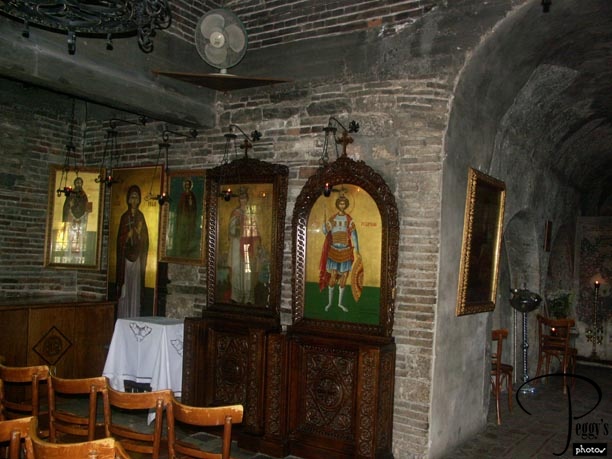
Inside the church.

Church of Dimitrios Loumbardiaris
Church of Dimitrios Loumbardiaris
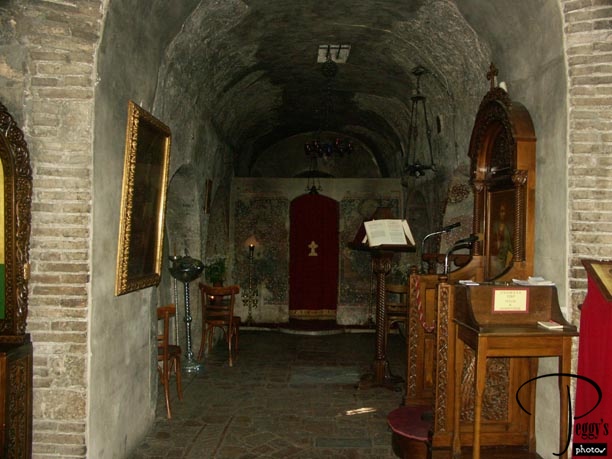
Inside the church.

Church of Dimitrios Loumbardiaris
Church of Dimitrios Loumbardiaris
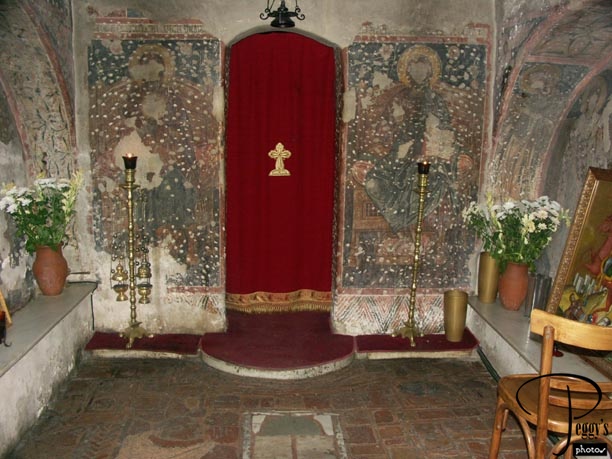
Inside the church.

Church of Dimitrios Loumbardiaris
Church of Dimitrios Loumbardiaris
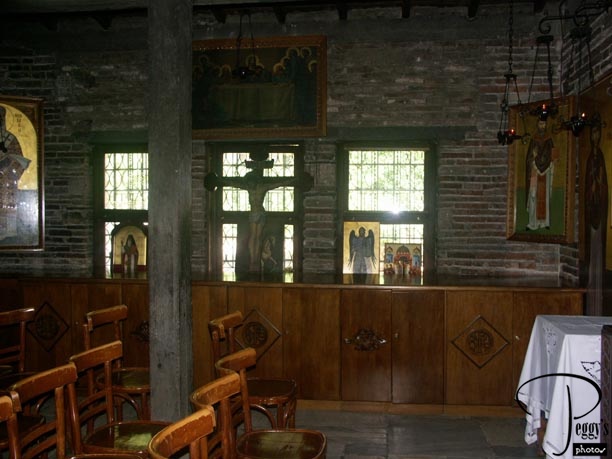
Inside the church.

Church of Dimitrios Loumbardiaris
Church of Dimitrios Loumbardiaris
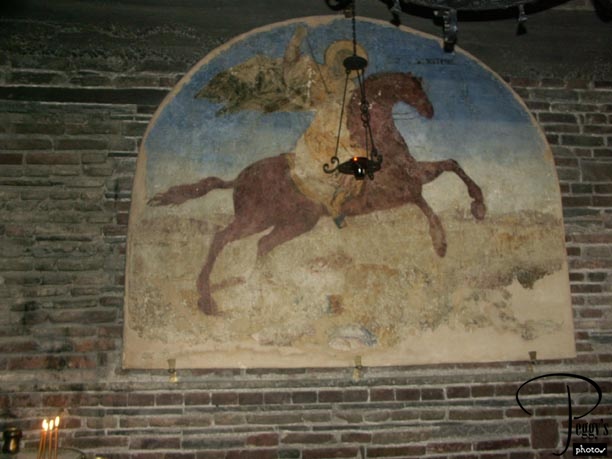
Inside the church.

Church of Dimitrios Loumbardiaris
Church of Dimitrios Loumbardiaris
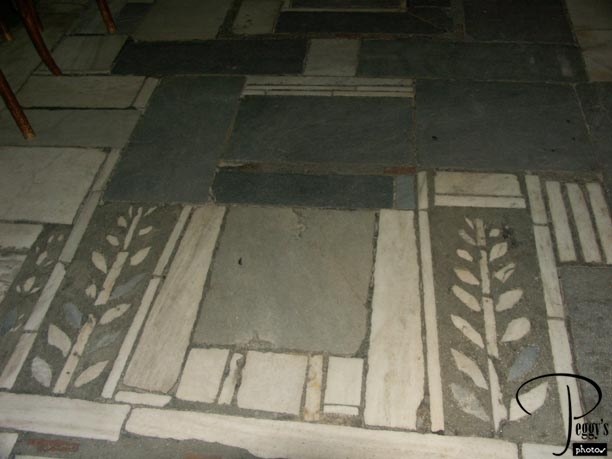
Floor inside the church.

Church of Dimitrios Loumbardiaris
Filopappou Hill

Walk up the hill, made up of stone steps. It wasn’t a hard walk but you had to be somewhat careful as the steps were uneven.

Filopappou Hill
Filopappou Hill
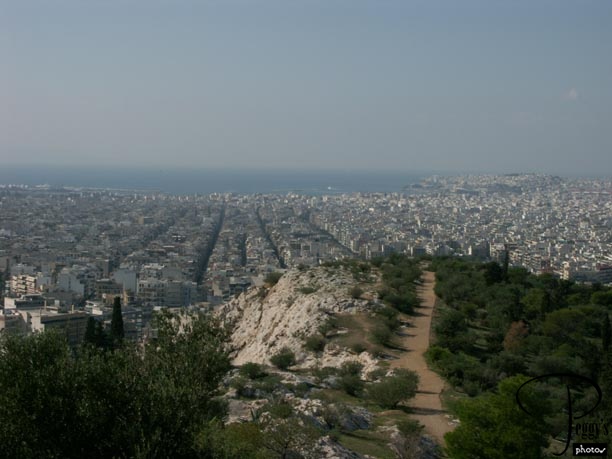
View of Athens and the port of Piraeus from the top of Filopappou Hill.

Filopappou Hill
Filopappou Hill
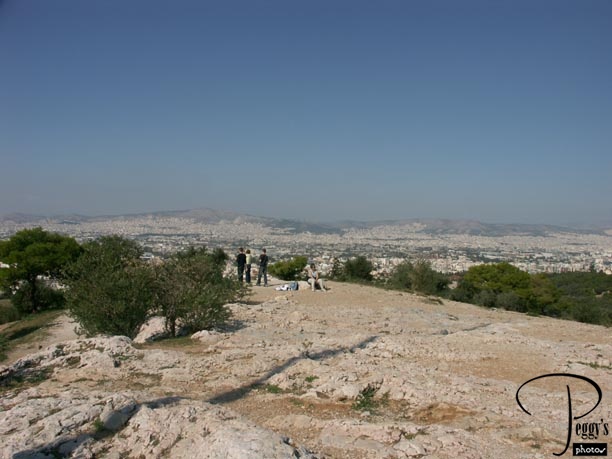
Another view of Athens. You have to make your own pathway over the rocks on top of the hill.

Filopappou Hill
Monument of Filopappus
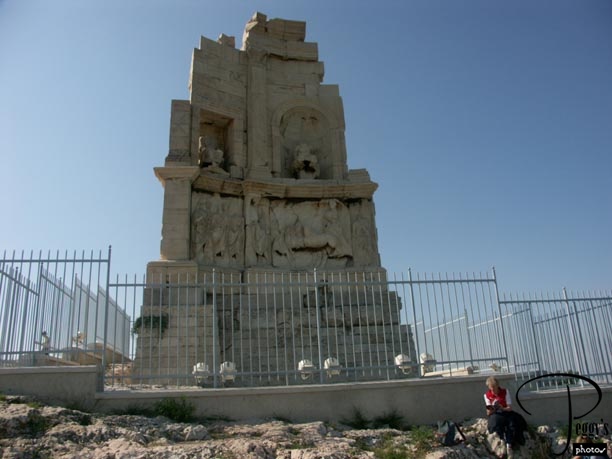
This monument is at the very top of the hill. It was built between 114 and 116 A.D. in honor of Caius Julius Antiochus Filopappus, a Roman senator who loved Athens so much he was made an honorary citizen of the city. It is also called the Tomb of Filopappus, so it can be assumed that he is buried here.

Monument of Filopappus
Monument of Filopappus
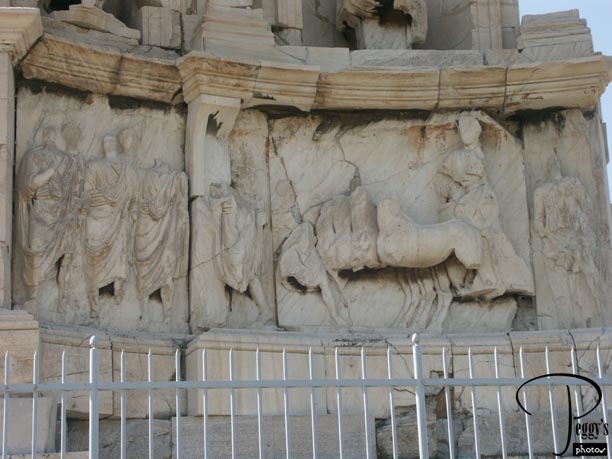
The frieze around the monument is of Filopappus arriving in a chariot for his inauguration as the Roman consul in 100 A.D.

Monument of Filopappus
Monument of Filopappus
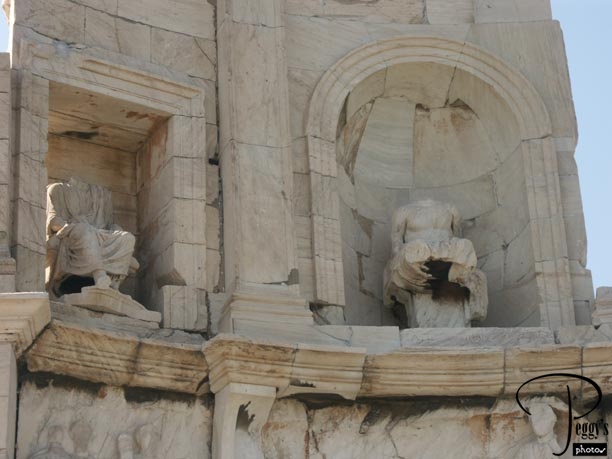
The statues are of Filopappus and of his grandfather, Antiochus IV. It looks like the statue of the grandfather would be the one on the left.

Monument of Filopappus
View of the Acropolis
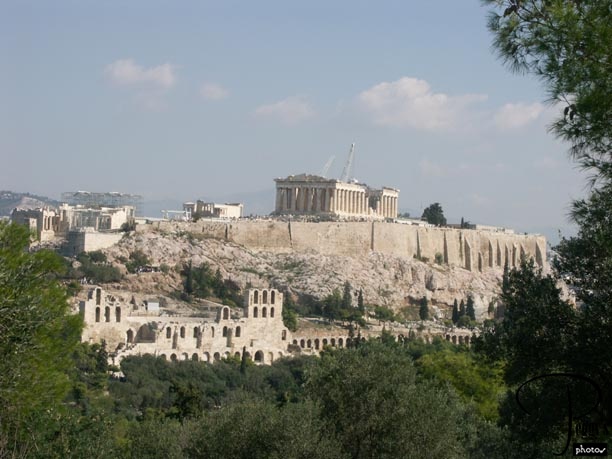
There are great views of the Acropolis all along the ascent to the top of the hill. Here is one view.

View of the Acropolis
View of the Acropolis
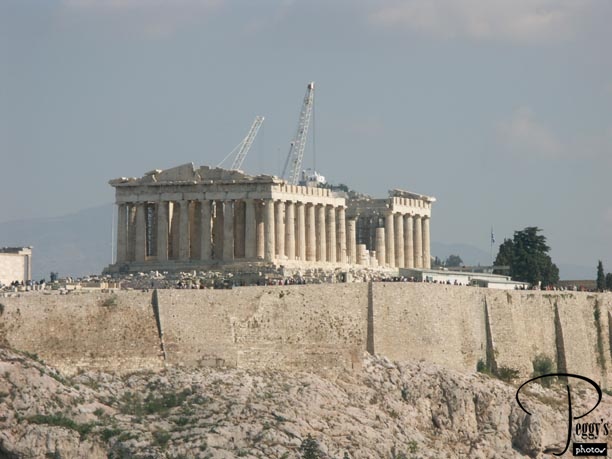
The Parthenon.

View of the Acropolis
View of the Acropolis
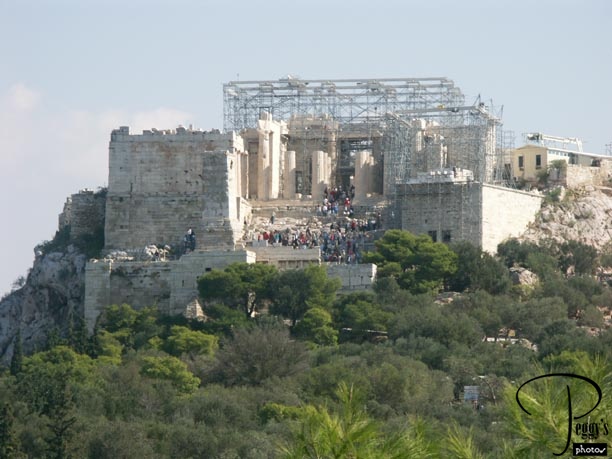
The entrance to the Acropolis. I was surprised that you could get this view of the Acropolis from Filopappou Hill as I took a similar photo from the top of Areopagus Hill (the Sacred Hill) but which is in a different direction from the Acropolis.

View of the Acropolis
Unification of Archaeological Sites Walkway
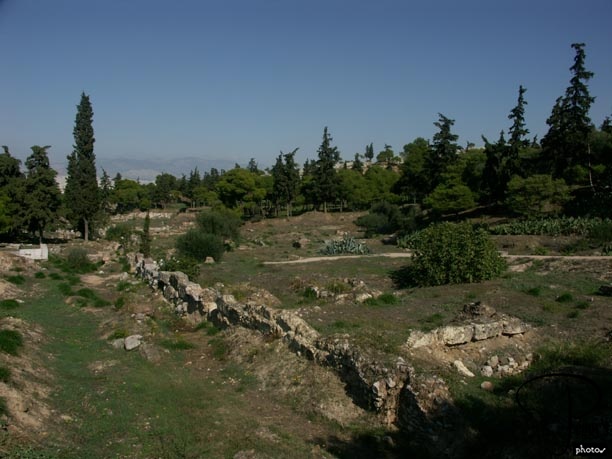
The next site that I wanted to visit was the ancient cemetery of Kerameikos. However, it was on the other side of the Acropolis from Filopappou Hill. The only way I knew how to get to Kerameikos was through the Ancient Agora and I certainly didn’t want to go that way after my experience there four days ago. After studying my Athens maps, I realized that I could walk along the Unification of Archaeological Sites Walkway to get to Kerameikos (something I could have done four days ago to avoid going back through the Ancient Agora if I knew how to read maps––perhaps there is Map Reading for Dummies book for those of us deficient in the skill of reading maps). This section of the walkway is named Apostolou Pavlou. It was a great walk as there are archeological and other sights on either side of the walkway. This photo shows some of the ruins along the way.

Unification of Archaeological Sites Walkway
Unification of Archaeological Sites Walkway
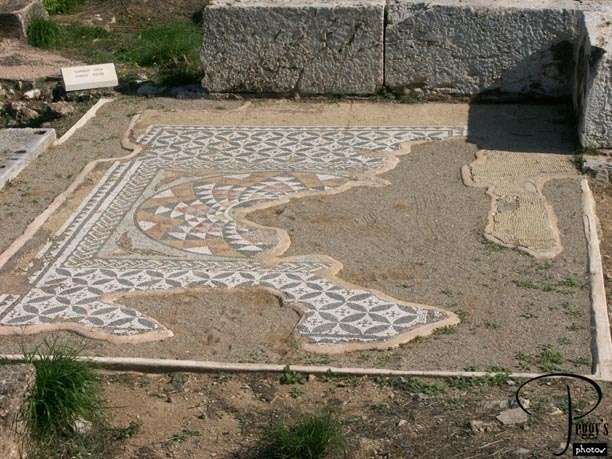
The floor of a Roman house in the ruins.

Unification of Archaeological Sites Walkway
Unification of Archaeological Sites Walkway
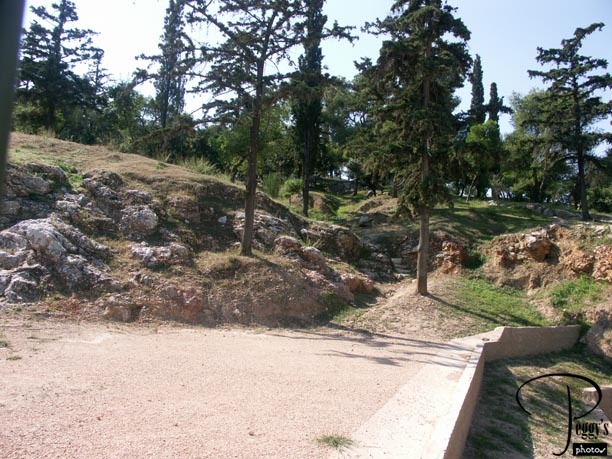
I believe that this is Pnyx Hill––if not, it is close by. Pnyx Hill is the site of the birthplace of democracy. Athens’ government changed from rule by one governor to rule by the people in 594 B.C. A 5,000–seat amphitheatre was built on Pnyx Hill and the first democratic voting was held in it.

Unification of Archaeological Sites Walkway
Unification of Archaeological Sites Walkway
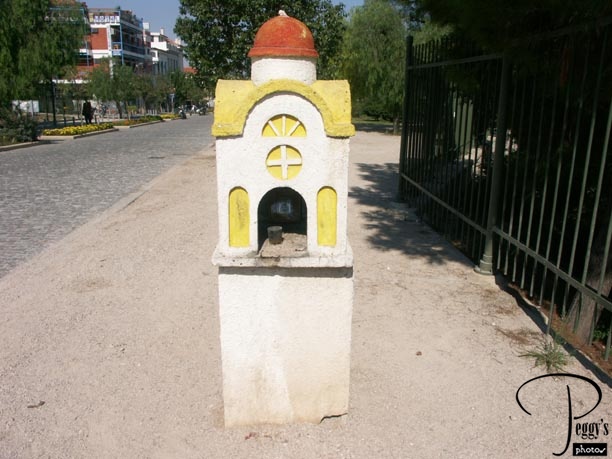
I thought that this little shrine was very oddly placed. It was the first shrine of this type that I had seen so far in Greece, but I was to see many more of similar shrines outside Athens. I was told later by my Trafalgar tour director that these shrines indicate that someone was in an accident at this exact place––usually a car or cycle accident. If the accident victim lived, he/she will go back to the scene of the accident and place a shrine there as thanks that he/she was still alive. If he/she didn’t survive the accident, his/her family would place the shrine.

Unification of Archaeological Sites Walkway
Unification of Archaeological Sites Walkway
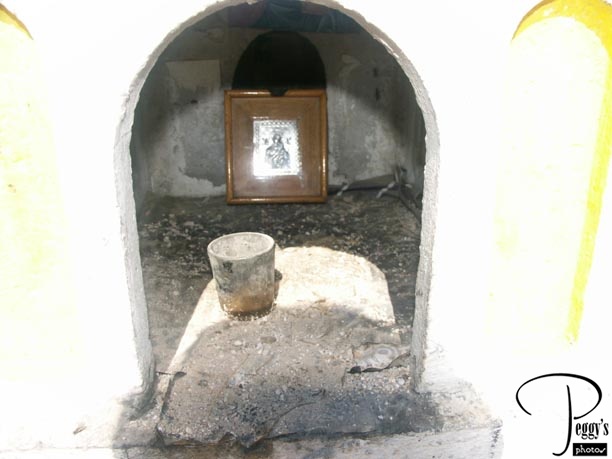
Inside the shrine. This shrine had an icon picture inside and also some kind of container. My Trafalgar tour guide said that usually the picture is of the accident victim and also that an oil is placed inside that can be lit.

Unification of Archaeological Sites Walkway
Unification of Archaeological Sites Walkway
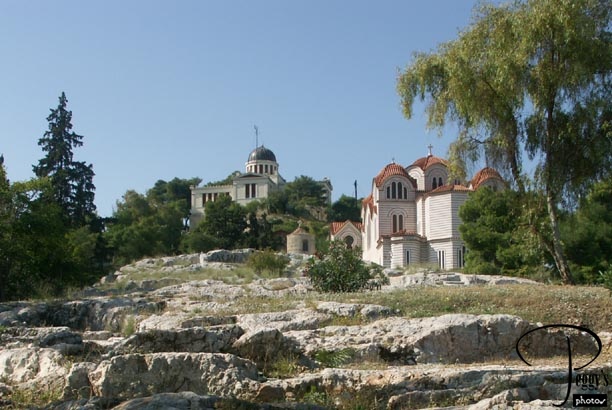
Hill of the Nymphs. On the left of the photo is the Asteroskopeion (Observatory), built in 1842 on the site of a sanctuary to nymphs that are associated with childbirth. The little chapel is the Chapel of St. Marina, dedicated to a protectress of sick children. It dates back to the Byzantine Empire. The larger church is the Agia Marina, built in 1927. There are two legends about the rock of St. Marina: women would slide down the smooth rock near the church to ensure fertility or pregnant women would slide down the smooth rock in hope of an equally smooth labor. There was also an ancient Sanctuary of Zeus on this hill.

Unification of Archaeological Sites Walkway
Unification of Archaeological Sites Walkway
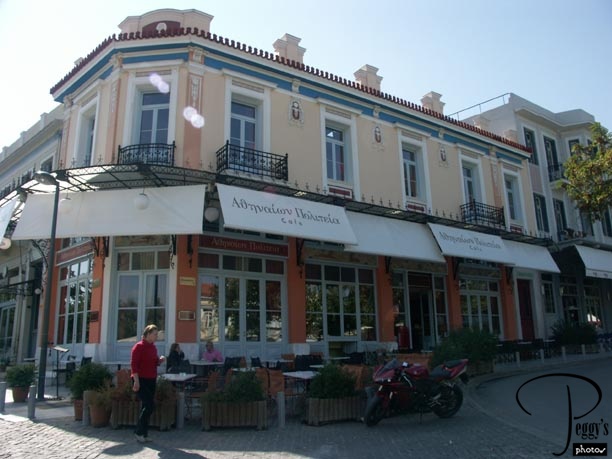
This walkway takes you to a very pretty section called Thissio where there are more restaurants.

Unification of Archaeological Sites Walkway
Unification of Archaeological Sites Walkway
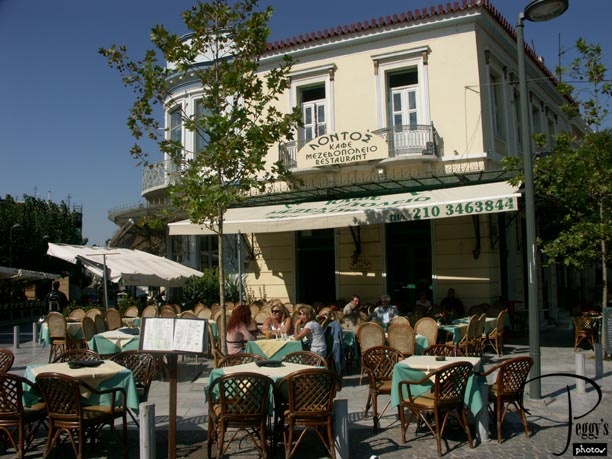
Another attractive Thissio restaurant.

Unification of Archaeological Sites Walkway
Unification of Archaeological Sites Walkway
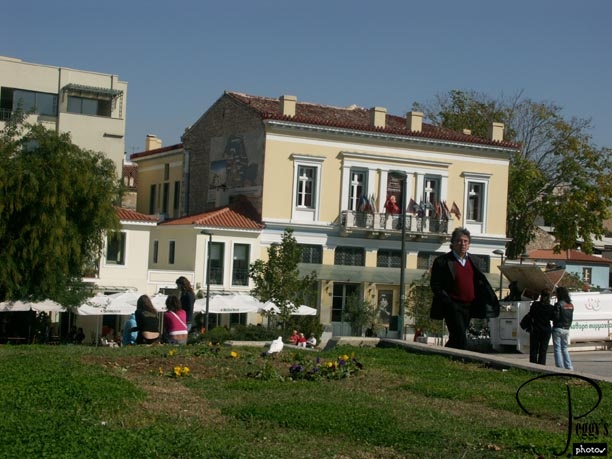
I had lunch at the restaurant where the white umbrellas are. I had already ordered my lunch: ham and cheese sandwich and Diet Pepsi, 7.50 euros plus tip, when I saw my new Belgian friends from last night at another table. I didn’t sit with them but we all enjoyed seeing someone who we knew.

Unification of Archaeological Sites Walkway
Kerameikos Cemetery
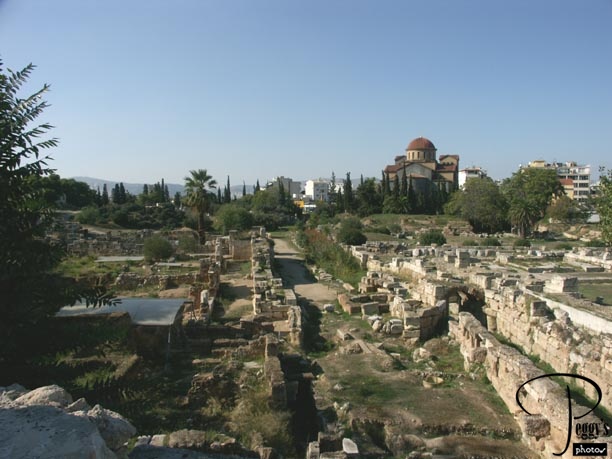
I made my way to Kerameikos Cemetery without much difficulty. It is the ancient cemetery in Athens and has been a burial ground since the 12th century B.C. It is on the Sacred Way, a road that priestesses and worshippers followed from the gate of Ancient Athens to Eleusis, about 20 kilometers from Athens. View of the ruins of the cemetery.

Kerameikos Cemetery
Kerameikos Cemetery
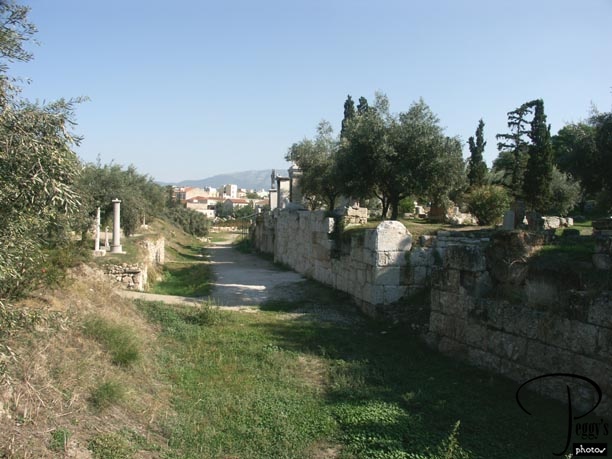
The Street of Tombs. This is the section of the cemetery where the richest families were buried. They added very decorative funerary statues and reliefs to the family tombs. These funerary artifacts, from the 5th and 4th centuries B.C., were excavated in the early 1900s and are now displayed in both the Oberlander Museum (on the cemetery property) and the National Archaeological Museum. The funerary statues on display in the actual cemetery are plaster replicas of the original ones. The sun prevented me from getting a good photo of the Street of Tombs.

Kerameikos Cemetery
Kerameikos Cemetery
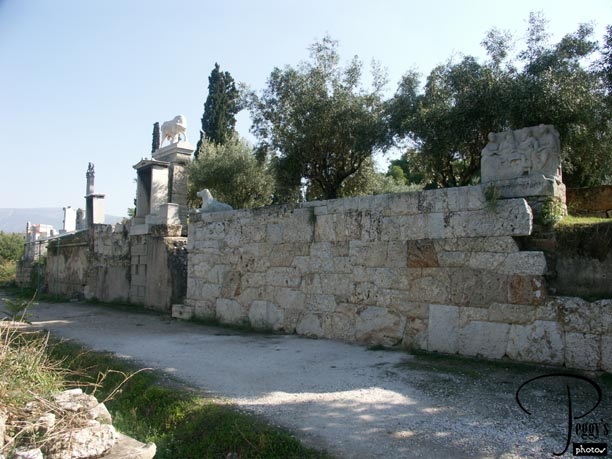
Another photo of the Street of Tombs.

Kerameikos Cemetery
Kerameikos Cemetery
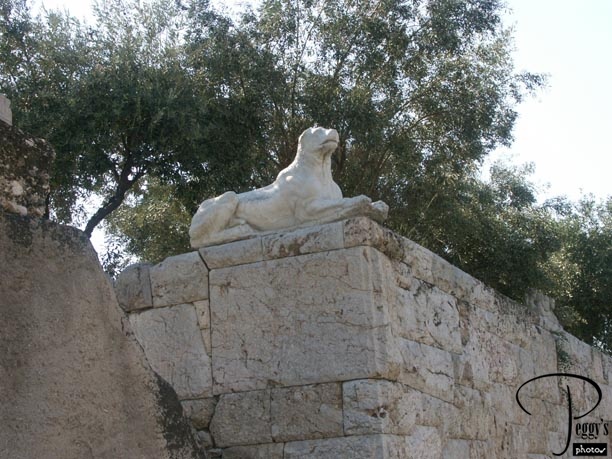
One of the tombs: the Precinct of Lysimachides. The marble dog is one of a pair.

Kerameikos Cemetery
Kerameikos Cemetery
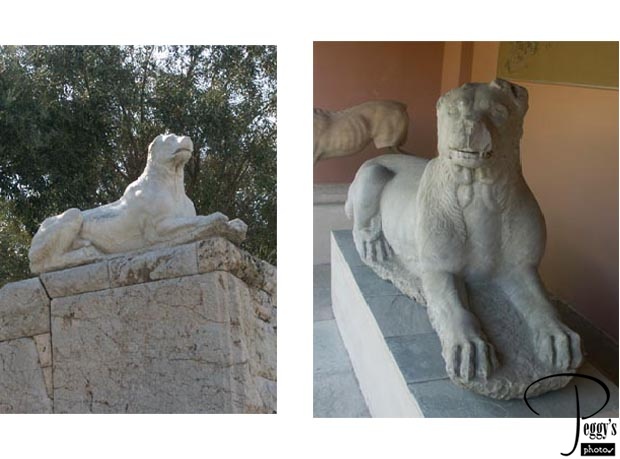
I have put the plaster replica of the marble dog that is in the actual cemetery on the left side of the photo and the original marble dog, which is in the Oberlander Museum, on the right side of the photo. I’ve done this also with some of the other funerary artifacts––some of the original appear to be in much better shape than do their plaster replicas.

Kerameikos Cemetery
Kerameikos Cemetery
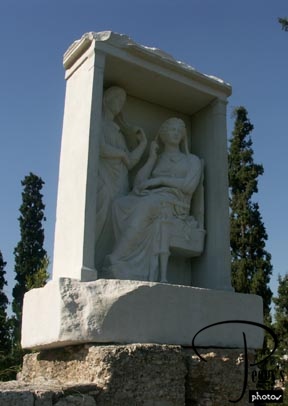
Stele (a stele is a relief sculpture, plural stelae) of Demetria and Pamphile. Pamphile is seated and her sister Demetria is standing next to her.

Kerameikos Cemetery
Kerameikos Cemetery
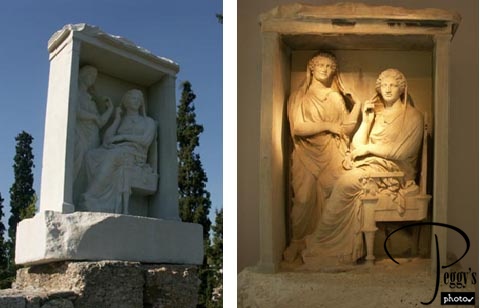
Stele of Demetria and Pamphile. Left: plaster replica; right, original.

Kerameikos Cemetery
Kerameikos Cemetery
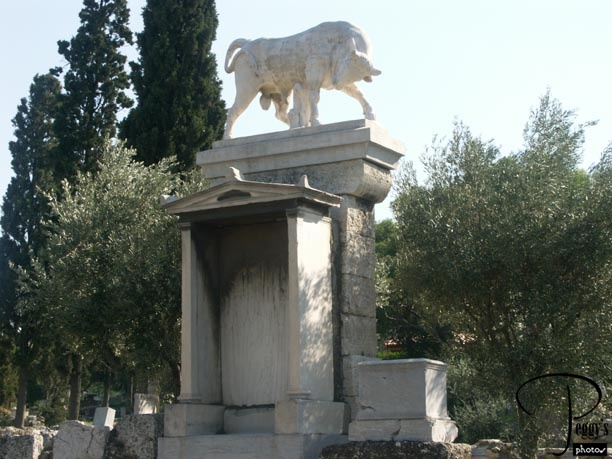
Tomb of Dionysios of Kollytos. Kollytos was a rich treasurer. The bull represents the god Dionysos.

Kerameikos Cemetery
Kerameikos Cemetery

Tomb of Dionysios of Kollytos. Left: plaster replica; right: original.

Kerameikos Cemetery
Kerameikos Cemetery
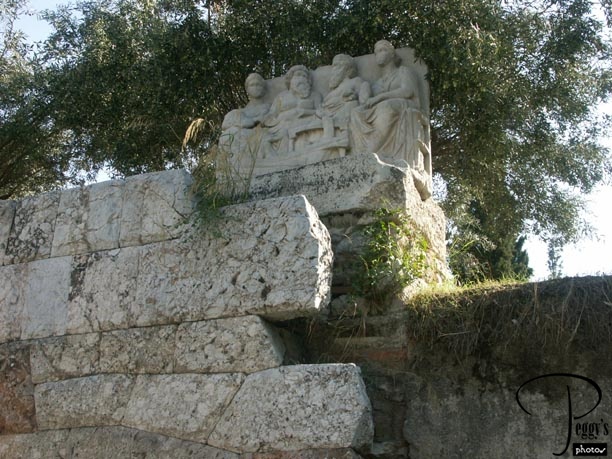
Unknown tomb––I couldn’t find any information on this particular tomb.

Kerameikos Cemetery
Kerameikos Cemetery
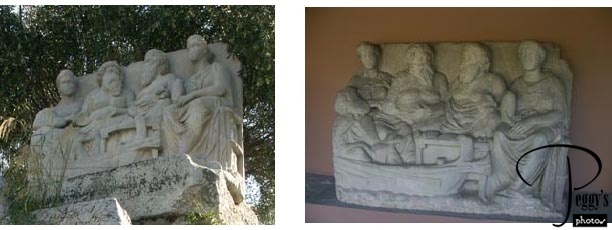
Unknown tomb. Left: plaster replica; right: original.

Kerameikos Cemetery
Kerameikos Cemetery
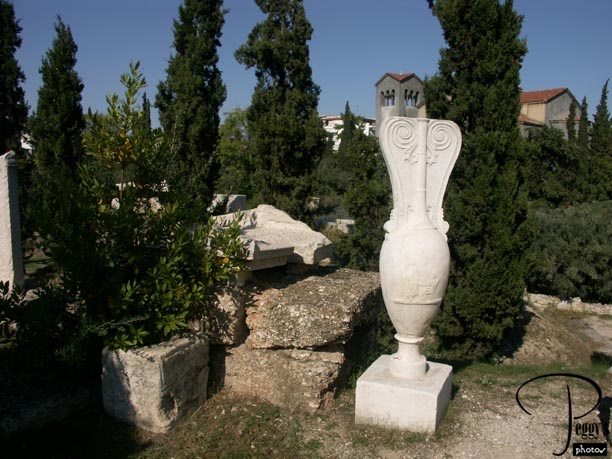
Loutrophoros of Hegetor. The relief on the vase is of a farewell scene.

Kerameikos Cemetery
Kerameikos Cemetery
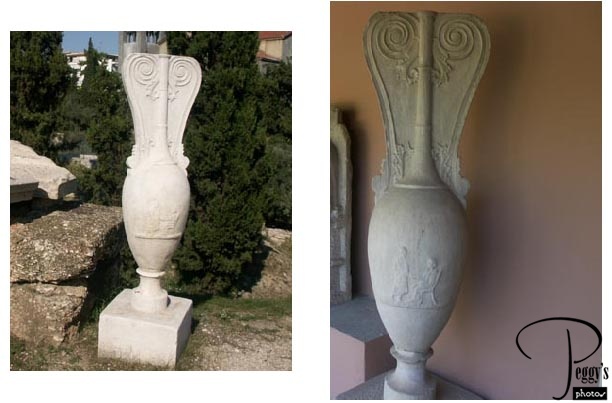
Loutrophoros of Hegetor. Left: plaster replica; right: original.

Kerameikos Cemetery
Kerameikos Cemetery
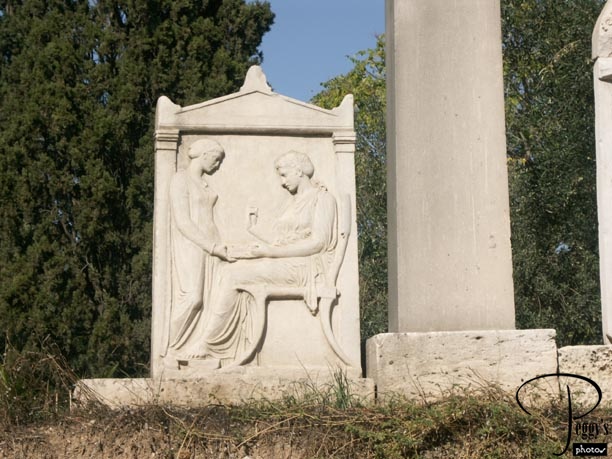
Grave stele of Hegoso on the family burial plot of Koroibos of Melite. The relief shows his wife, Heeso, admiring her jewels with a servant. I did not take a photo of the original.

Kerameikos Cemetery
Kerameikos Cemetery–Oberlander Museum
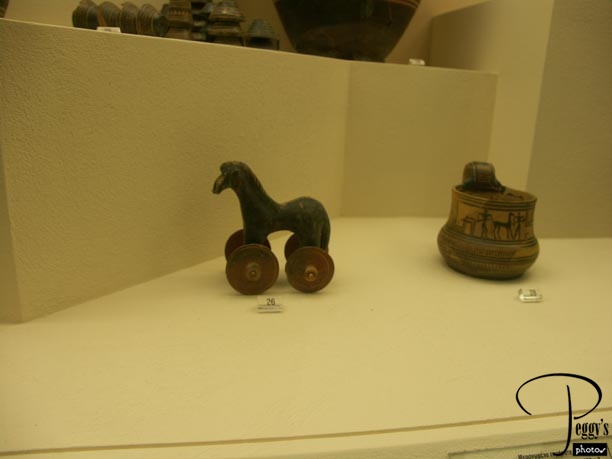
The Oberlander Museum also has a collection of funerary artifacts that were found in the graves. This photo shows a child’s toy and a vase.

Kerameikos Cemetery–Oberlander Museum
Kerameikos Cemetery–Oberlander Museum
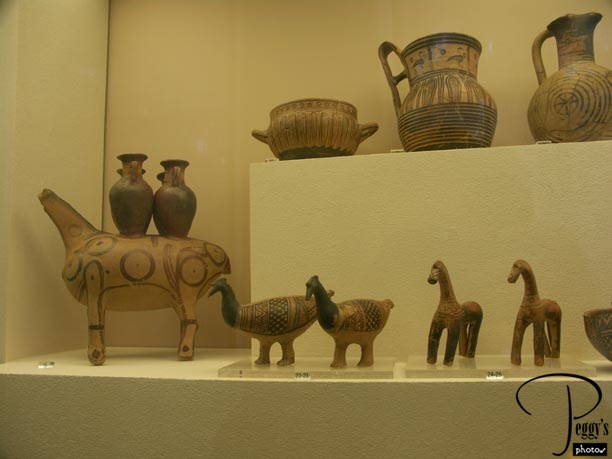
Children’s horses and vases.

Kerameikos Cemetery–Oberlander Museum
Kerameikos Cemetery–Oberlander Museum
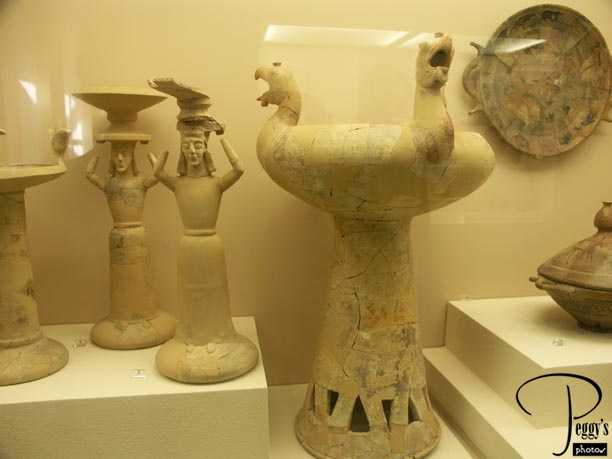
More artifacts found in the graves.

Kerameikos Cemetery–Oberlander Museum
Kerameikos Cemetery–Oberlander Museum
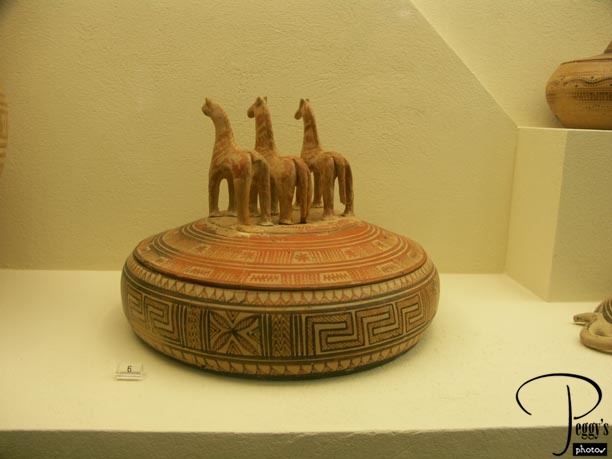
More artifacts.

Kerameikos Cemetery–Oberlander Museum
Kerameikos Cemetery–Oberlander Museum
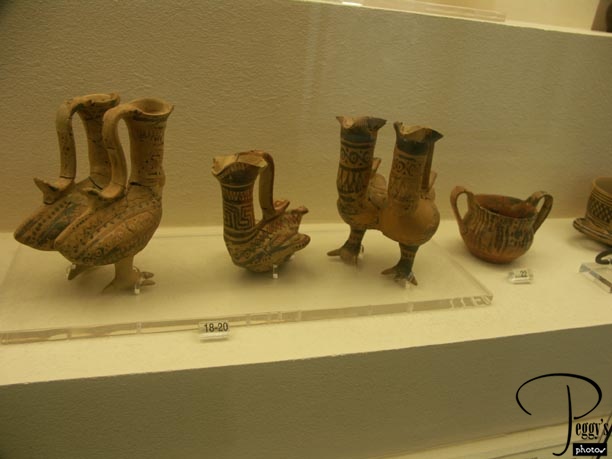
More artifacts.

Kerameikos Cemetery–Oberlander Museum
Kerameikos Cemetery–Oberlander Museum
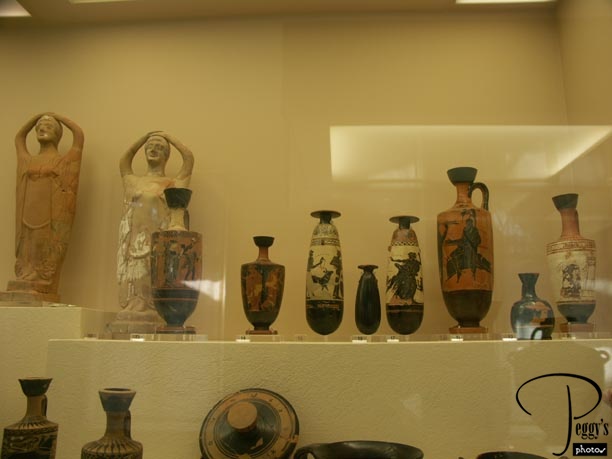
More artifacts.

Kerameikos Cemetery–Oberlander Museum
Kerameikos Cemetery–Oberlander Museum
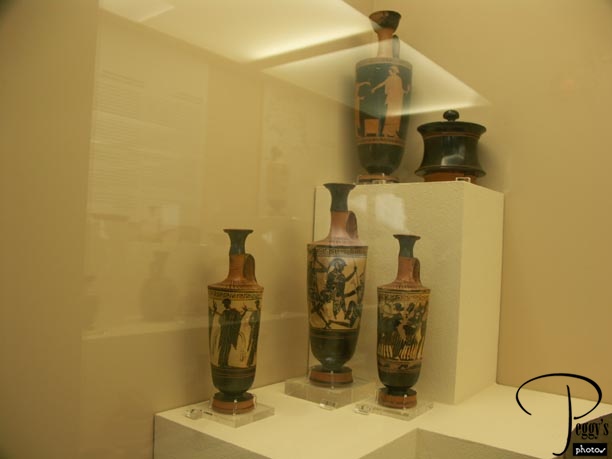
More artifacts.

Kerameikos Cemetery–Oberlander Museum
Kerameikos Cemetery–Oberlander Museum
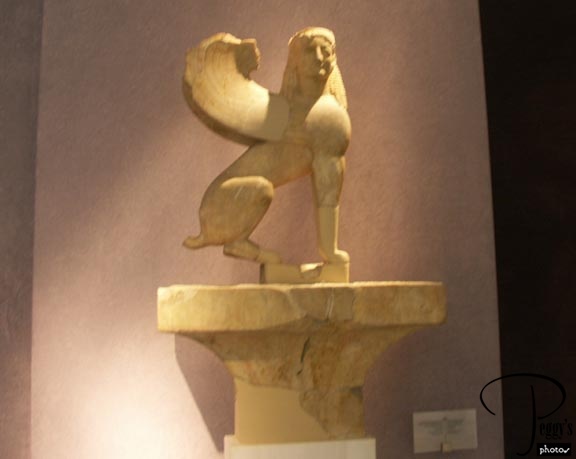
Marble sphinx (circa 550 B.C.) that once was on top of a grave stele.

Kerameikos Cemetery–Oberlander Museum
Going Back to My Hotel
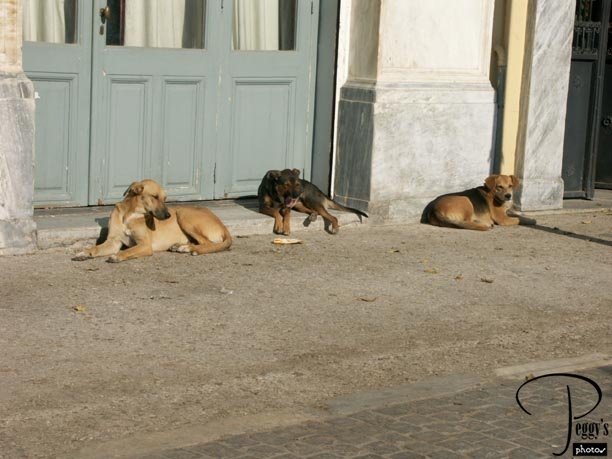
While walking around the cemetery, I didn’t realize that I was the only one left walking around it. Thankfully, the one official person left after closing time (3 p.m.) saw me and was surprised that I didn’t know that the cemetery had closed. So, onward: I had three ways to get back to my hotel––I was very near the Thissio Metro station and could take it to the station near my hotel; I could get on the tourist bus, but I didn’t want to take the long ride to the hotel on it; or I could walk back. Thissio runs into the Monastiraki section of Athens, which runs into the Plaka section, near my hotel. I had tried to find my way from Monastiraki to the Plaka three days ago and took a wrong turn. I decided to retake the challenge––but, and I don’t know exactly how I did it, I again took a wrong turn. Photo: some of the Athens stray dogs I passed on my walk.

Going Back to My Hotel
Syntagma Metro Station
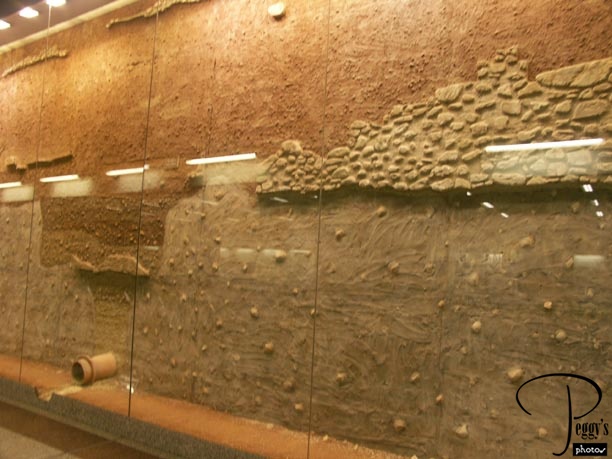
I wasn’t lost––I just didn’t end up where I wanted to be. I could now take the 15–20–minute walk back to my hotel or, since I was tired, take the Metro from the Syntagma station to the Akropoli station near my hotel (I figured out the Metro routes way before I knew the walking routes). This is an “archeological museum” station. This photo shows part of the excavation wall that was left to view after the subway was built. That is an original ancient pipe in the wall.

Syntagma Metro Station
Syntagma Metro Station
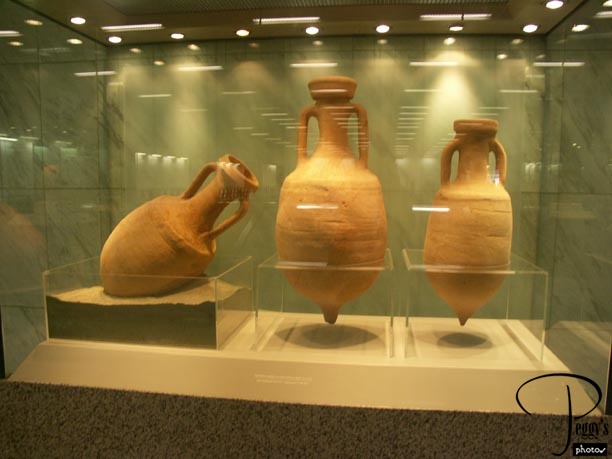
Ancient vases unearthed during the excavation.

Syntagma Metro Station
Syntagma Metro Station
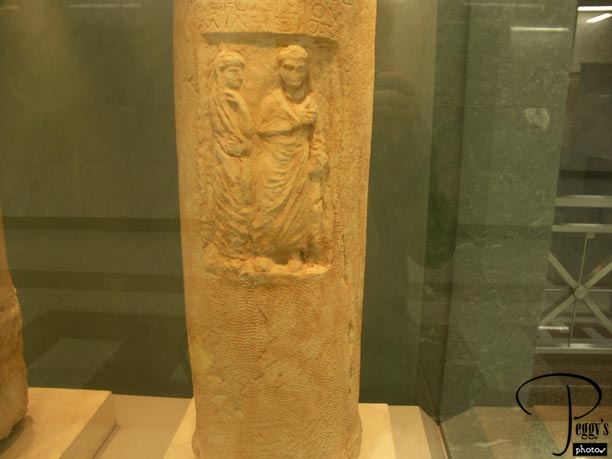
Grave stone unearthed during the excavation. There was an ancient burial ground here.

Syntagma Metro Station
Syntagma Metro Station
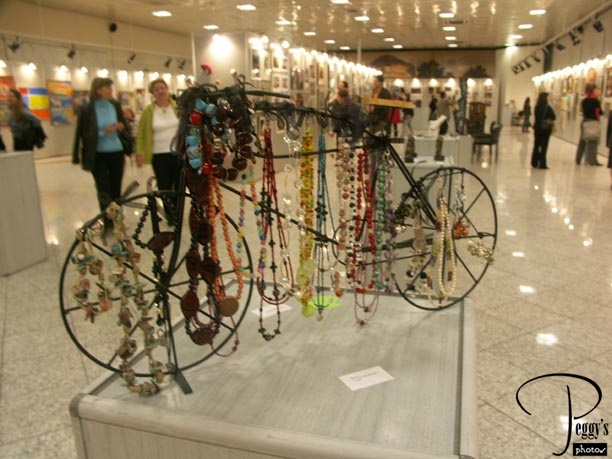
There is also an exhibition hall at the station. Some of the “underground art” on display.

Syntagma Metro Station
Syntagma Metro Station
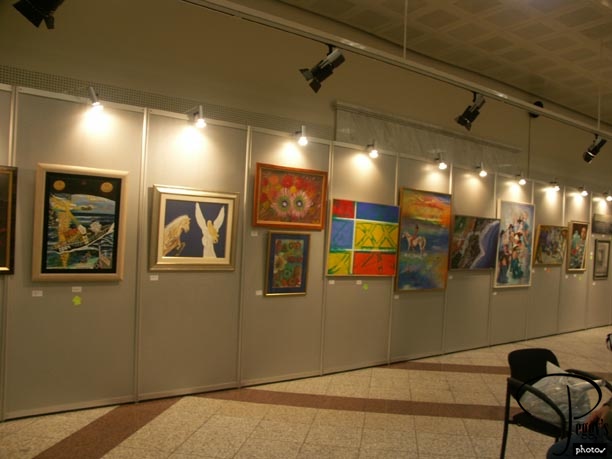
Paintings on exhibit.

Syntagma Metro Station
Syntagma Metro Station
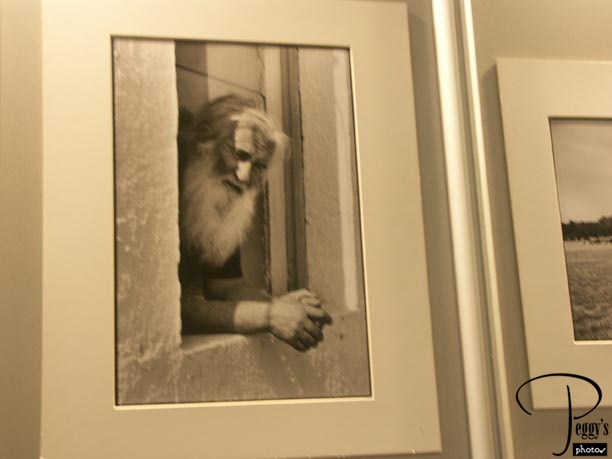
One of the photos on exhibit. I took the Metro to the Akropoli station and found my way back to my hotel. I bought cookies and a Diet Coke from a newspaper/snack vendor on the corner and had that with some fruit I had taken from the breakfast buffet that morning and had those for dinner, as I had wore myself out way too much to want to go out for something better.
